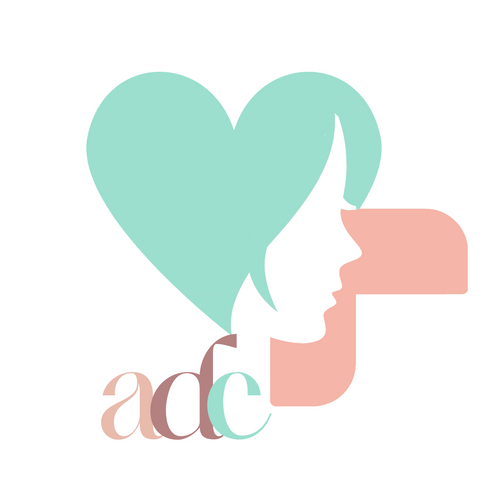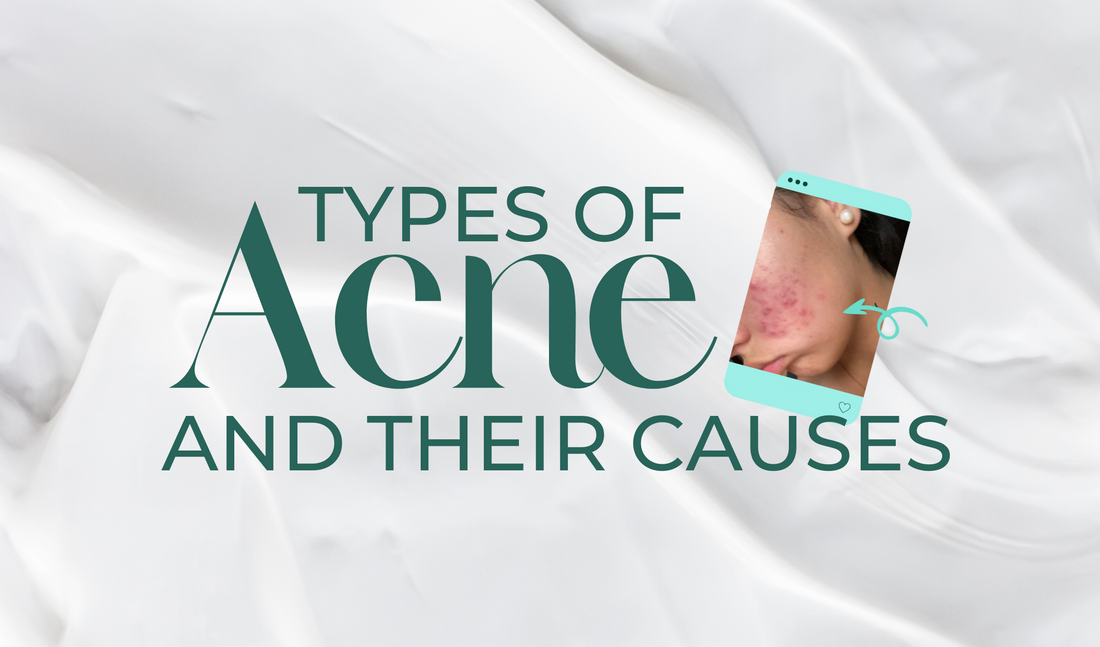Comprehensive Acne Management Strategies at Australian Dermal Clinic
Acne is a multifaceted skin condition affecting many individuals, requiring tailored treatment plans to address its varied presentations. At Australian Dermal Clinic, we understand the complexities of acne and its impact on self-esteem and quality of life.
Our clinic owner’s personal journey with acne and rosacea fuels her passion for helping clients achieve clear, glowing skin. Having battled acne throughout her life and currently managing acne and rosacea with remarkable results, Rosh brings a wealth of personal and professional insight to the treatment process.
Understanding Different Types of Acne
To effectively treat acne, it's important to know the different types and what causes them. Here, we'll explain two common types: comedonal acne and papulopustular acne.
Comedonal Acne
Comedonal acne is the type of acne that consists of blackheads and whiteheads. It happens when your hair follicles (pores) get clogged with oil and dead skin cells.
- Blackheads: These are open comedones. They appear black because the trapped material inside the pore gets exposed to air and oxidizes.
- Whiteheads: These are closed comedones. They remain white or flesh-colored because the trapped material is not exposed to air.
Comedonal acne is usually not inflamed, meaning it's less red and swollen compared to other types of acne. It's common on the forehead, nose, and chin.
Papulopustular Acne
Papulopustular acne is the type that includes red, inflamed bumps. These can be more painful and are usually caused by bacterial growth and inflammation in clogged pores.
- Papules: These are small, red, inflamed bumps without pus.
- Pustules: These are similar to papules but contain pus, making them look like white or yellow spots with a red base.
Papulopustular acne can be more severe than comedonal acne and may lead to scarring if not treated properly.
Now that you know what comedonal and papulopustular acne are, let’s dive into how to treat them.

Tailored Acne Treatment Plans for Different Types of Acne
Management Strategy Effective acne management depends on the type and severity of acne lesions. Combination therapy is often the most appropriate approach to address acne's multifactorial nature.
For mild forms of acne, topical therapy is the first line of treatment.
This includes comedonal acne and mild-to-moderate papulopustular acne without scarring. Topical treatments are also used for maintenance therapy to prevent the formation of microcomedones, the precursor stage of acne lesions.
Common treatments of Acne
Comedonal Acne: Monotherapy with topical retinoids is preferred. Retinoids are comedolytic and have anti-inflammatory effects. They include tretinoin, isotretinoin, adapalene, and tazarotene.
Papulopustular Acne: Combination of benzoyl peroxide (BPO) with topical retinoids or BPO with topical antibiotics is recommended. Fixed-dose combinations may enhance patient adherence due to their once-daily application.

Key topical agents include
Retinoids: Tretinoin, isotretinoin, adapalene, and tazarotene. Antimicrobial and antibacterial agents. Hormonal agents or herbal remedies.
Topical Treatments Topical regimens require 4 to 12 weeks to show significant results.
If initial treatments are not effective, second-line therapies include:
Comedonal Acne
Benzoyl peroxide (topical), azelaic acid, and superficial peels (lipohydroxy acid, salicylic acid).
Papulopustular Acne
Azelaic acid, topical retinoids, and combination therapies involving azelaic acid with topical clindamycin or erythromycin. Moderate Papulopustular Acne with Scarring For males with moderate papulopustular acne with scarring, oral antibiotics are the treatment of choice. This includes second-generation tetracyclines (doxycycline, minocycline) due to their anti-inflammatory properties and pharmacokinetic advantages.
Advanced Treatments For more severe acne forms
Advanced Treatments for Severe Acne Forms
Oral Isotretinoin
Oral isotretinoin, also known as Accutane, is a potent medication used to treat severe nodulocystic acne and prevent acne scarring. It works by reducing oil production, decreasing inflammation, and preventing the formation of new acne lesions. It is typically prescribed when other treatments have failed to produce satisfactory results.
Hormonal Treatments
Hormonal treatments, such as hormonal antiandrogens, are effective for managing acne in females, especially in cases with signs of hormonal imbalance or persistent acne. These medications work by regulating hormone levels and reducing the production of sebum, the oily substance that can clog pores and lead to acne breakouts.
Incorporating Procedural Therapies to Enhance Treatment Outcomes
Clinical Treatments
Clinical treatments, also known as procedural therapies, are specialized procedures performed by skincare professionals to improve acne and overall skin health. These treatments are typically done in a clinic or dermatologist's office and can include:
Chemical Peels
Chemical peels use various acids, such as alpha-hydroxy acid, glycolic acid, beta-hydroxy acid, and salicylic acid, to exfoliate the skin, unclog pores, and promote cell turnover. This helps to reduce acne lesions and improve skin texture and tone.
Acne Crystal Peel
This specialised skin treatment is designed to combat acne and restore your skin's natural beauty. It involves a customised peel tailored to your unique needs, performed by experienced professionals who analyze your skin type and condition.
Microdermabrasion
Microdermabrasion is a non-invasive procedure that uses a special device to gently exfoliate the outer layer of the skin, removing dead skin cells and debris. It can be effective for mild-to-moderate acne, helping to improve skin texture and reduce acne lesions.
LED Light Therapy
LED light therapy involves exposing the skin to specific wavelengths of light to target acne-causing bacteria, reduce inflammation, and promote healing. Performed using medical-grade equipment in a clinic this is

LED Light Therapy at Home
With devices like the Omnilux Clear Face Mask, which offers medical-grade LED light therapy for acne in the comfort of your own home.
Medical Skin Needling
Medical skin needling, also known as microneedling, is a minimally invasive procedure that uses fine needles to create controlled micro-injuries in the skin. This stimulates collagen production and helps to improve the appearance of acne scars and overall skin texture.
These clinical treatments can be effective additions to acne management plans, especially for individuals with more severe forms of acne or those looking to enhance the results of their skincare routine.
Products for Enhanced Acne Treatment
In addition to clinical treatments, Australian Dermal Clinic offers a range of clinically proven products from dermaviduals, specifically formulated to address acne-prone skin.
These proven products are tailored to your skin type and can complement your chosen treatment, enhancing its effectiveness and promoting clearer, healthier skin. Our experienced professionals will carefully analyze your skin and recommend the most suitable professional products to incorporate into your acne skincare routine, ensuring personalised care and optimal results.
ADC's clinic owner’s personal experience with acne and rosacea drives our commitment to providing empathetic and effective acne treatments. Having managed her conditions successfully, she ensures our clients receive personalised care that leads to glowing skin and restored confidence.

All your acne questions answered
Q: What causes acne?
A: Acne is primarily caused by excess oil production, clogged hair follicles, bacteria, and inflammation. Hormonal changes, stress, diet, and genetics can also contribute to the development of acne.
Q: How do topical retinoids work in treating acne?
A: Topical retinoids, such as tretinoin, isotretinoin, adapalene, and tazarotene, work by promoting cell turnover, preventing clogged pores, and reducing inflammation. They are effective in treating comedonal acne and are also used as maintenance therapy.
Q: What is the difference between comedonal acne and papulopustular acne?
A: Comedonal acne is characterised by non-inflammatory lesions, such as blackheads and whiteheads. Papulopustular acne involves inflamed lesions, including papules (small red bumps) and pustules (pus-filled lesions).
Q: Why is combination therapy often recommended for acne treatment?
A: Combination therapy is recommended because acne has multiple contributing factors, such as bacteria, excess oil, and inflammation. Using different treatments together can target these various aspects more effectively, leading to better outcomes.
Q: How are oral antibiotics used in acne treatment?
A: Oral antibiotics are used for moderate to severe acne, especially when there is scarring. They reduce inflammation and bacterial growth, helping to clear the skin.
Q: What is oral isotretinoin, and when is it prescribed?
A: Oral isotretinoin is a powerful medication used to treat severe nodulocystic acne and prevent acne scarring. It is prescribed when other treatments have not been effective. It reduces oil production, bacteria, and inflammation.
Q: Are there any hormonal treatments available for acne?
A: Yes, hormonal treatments can be effective for both males and females, particularly those with additional signs of hormonal imbalance, like peripheral hyperandrogenism or persistent acne. These treatments work by regulating hormone levels and reducing the production of sebum, the oily substance that can clog pores and lead to acne breakouts.
Q: What is the difference between acne and pimples?
A: Acne and pimples are both common skin conditions, but they differ in terms of severity and presentation. Acne, also known as acne vulgaris, encompasses a broader range of skin issues, including blackheads, whiteheads, papules, pustules, cysts, and nodules.
Pimples, on the other hand, specifically refer to the inflamed, raised lesions that result from clogged pores and bacterial infection. While pimples are a type of acne lesion, acne itself is a chronic skin condition characterised by a variety of lesions and may also include non-inflammatory lesions like blackheads and whiteheads.
Q: What procedural therapies can enhance acne treatment outcomes?
A: Procedural therapies, including chemical peels, LED light therapy, and medical skin needling, can significantly improve treatment outcomes. These procedures work by exfoliating the skin, reducing acne lesions, stimulating collagen production, and improving skin texture, ultimately promoting clearer, healthier skin.
At Australian Dermal Clinic, we offer comprehensive and personalised acne treatment plans. By understanding the complexities of acne and combining various therapies, we help our clients achieve their skincare goals. Whether dealing with mild acne or more severe forms, our team is dedicated to providing the highest quality care.
Feel free to reach out if you need any further modifications or additional information included!

